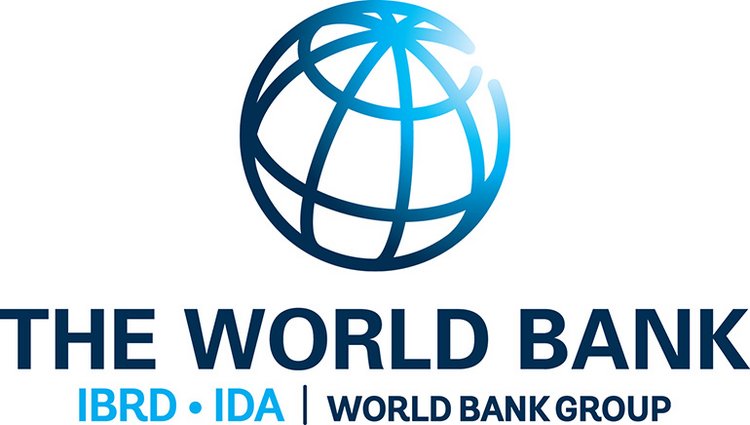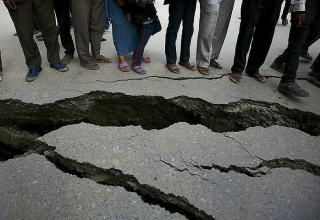
NP newsroom
WASHINGTON: Global remittances are projected to decline sharply by about 20 percent in 2020 due to the economic crisis induced by the COVID-19 pandemic and shutdown, a World Bank report has assessed.
The projected fall, which would be the sharpest decline in recent history, is largely due to a fall in the wages and employment of migrant workers, who tend to be more vulnerable to loss of employment and wages during an economic crisis in a host country.
Remittances to low and middle-income countries (LMICs) are projected to fall by 19.7 percent to $445 billion, representing a loss of a crucial financing lifeline for many vulnerable households.
Studies show that remittances alleviate poverty in lower and middle-income countries, improve nutritional outcomes, are associated with higher spending on education, and reduce child labor in disadvantaged households. A fall in remittances affect families’ ability to spend on these areas as more of their finances will be directed to solve food shortages and immediate livelihoods needs.
“Remittances are a vital source of income for developing countries. The ongoing economic recession caused by COVID-19 is taking a severe toll on the ability to send money home and makes it all the more vital that we shorten the time to recovery for advanced economies,” said World Bank Group President David Malpass. “Remittances help families afford food, healthcare, and basic needs. As the World Bank Group implements fast, broad action to support countries, we are working to keep remittance channels open and safeguard the poorest communities’ access to these most basic needs.”
Remittance flows are expected to fall across all World Bank Group regions, most notably in Europe and Central Asia (27.5 percent), followed by Sub-Saharan Africa (23.1 percent), South Asia (22.1 percent), the Middle East and North Africa (19.6 percent), Latin America and the Caribbean (19.3 percent), and East Asia and the Pacific (13 percent).
The large decline in remittance flows in 2020 comes after remittances to LMICs reached a record $554 billion in 2019. Even with the decline, remittance flows are expected to become even more important as a source of external financing for LMICs as the fall in foreign direct investment is expected to be larger (more than 35 percent). In 2019, remittance flows to LMICs became larger than FDI, an important milestone for monitoring resource flows to developing countries.
In 2021, the World Bank estimates that remittances to LMICs will recover and rise by 5.6 percent to $470 billion. The outlook for remittance remains as uncertain as the impact of COVID-19 on the outlook for global growth and on the measures to restrain the spread of the disease. In the past, remittances have been counter-cyclical, where workers send more money home in times of crisis and hardship back home. This time, however, the pandemic has affected all countries, creating additional uncertainties.
“Effective social protection systems are crucial to safeguarding the poor and vulnerable during this crisis in both developing countries as well as advanced countries. In host countries, social protection interventions should also support migrant populations,” said Michal Rutkowski, Global Director of the Social Protection and Jobs Global Practice at the World Bank.
The global average cost of sending $200 remains high at 6.8 percent in the first quarter of 2020, only slightly below the previous year. Sub-Saharan Africa continued to have the highest average cost, at about 9 percent, yet intra-regional migrants in Sub-Saharan Africa comprise over two-thirds of all international migration from the region.
“Quick actions that make it easier to send and receive remittances can provide much-needed support to the lives of migrants and their families. These include treating remittance services as essential and making them more accessible to migrants,” said Dilip Ratha, lead author of the Brief and head of KNOMAD.
Regional remittance trends: Remittance
flows to the East Asia and Pacificregion grew by 2.6 percent to $147
billion in 2019, about 4.3 percentage points lower than the growth rate in
2018.
In 2020, remittance flows are expected to decline by 13 percent. The slowdown is expected to be driven by declining inflows from the United States, the largest source of remittances to the region. Several remittance-dependent countries such as those in the Pacific Islands could see households at risk as remittance incomes decline over this period.
A recovery of 7.5 percent growth for the region is anticipated in 2021. Remittance costs: The average cost of sending $200 to the East Asia and Pacific region dropped to 7.13 percent in the first quarter of 2020, compared to the same quarter in 2019. The five lowest cost corridors in the region averaged 2.6 percent while the five highest cost corridors averaged 15.4 percent as of 2019 Q4.
Remittances to countries in Europe and Central Asia remained strong in 2019, growing by about 6 percent to $65 billion in 2019. Ukraine remained the largest recipient of remittances in the region, receiving a record high of nearly $16 billion in 2019.
Smaller remittance-dependent economies in the region, such as Kyrgyz Republic, Tajikistan, and Uzbekistan, particularly benefited from rebound of economic activity in Russia.
In 2020, remittances are estimated to fall by about 28 percent due to the combined effect of the global coronavirus pandemic and lower oil prices. Remittance costs: The average cost of sending $200 to the ECA region declined modestly to 6.48 percent in the first quarter of 2020 from 6.67 percent a year earlier. The differences in costs across corridors in the region are substantial; the highest costs for sending remittances were from Turkey to Bulgaria, while the lowest costs for sending remittances were from Russia to Azerbaijan.
Remittances flows into Latin America and the Caribbean grew 7.4 percent to $96 billion in 2019. Growth in inflows was uneven across countries in the region. Brazil, Guatemala and Honduras saw a rise in remittances of more than 12 percent in 2019.
Colombia, Ecuador, Nicaragua and Panama had an increase of more than 6 percent, while remittances to Bolivia and Paraguay declined by 3.8 percent and 2.2 percent, respectively.
In 2020, remittance flows to the region is estimated to fall by 19.3 percent. Remittance costs: The average cost of sending $200 to the region was 5.97 percent in the first quarter of 2020.
Amid the COVID-19 crisis, the costs of transferring remittances to the region could increase due to operational challenges being faced by remittance service providers (closures of agents and offices, access to cash, foreign exchange, security) and compliance with AML/CFT regulations.
Remittances to the Middle East and North Africa region are projected to fall by 19.6 percent to $47 billion in 2020, following the 2.6 percent growth seen in 2019. The anticipated decline is attributable to the global slowdown as well as the impact of lower oil prices in GCC countries. Remittances from the euro area would also be impacted by the area’s pre-COVID-19 economic slowdown and the depreciation of the euro against the U.S. dollar. In 2021, remittances to the region is expected to recover, albeit at a slow pace of around 1.6 percent due to projected moderate growth in the euro area and weak GCC outflows. Remittance costs: The cost of sending $200 to the region was 7 percent, largely unchanged from the previous year. Costs vary greatly across corridors. The cost of sending money from high-income OECD countries to Lebanon continues to be in the double digits.
Sending money from GCC countries to Egypt and Jordan costs between 3 percent to 5 percent in some corridors. The Saudi Arabia to Syria corridor has experienced a dramatic fall in costs as the civil war in Syria has receded.
Remittances to South Asia are projected to decline by 22 percent to $109 billion in 2020, following the growth of 6.1 percent in 2019. The deceleration in remittances to the South Asian region in 2020 is driven by the global economic slowdown due to the coronavirus outbreak as well as oil price declines.
The economic slowdown is likely to directly affect remittance outflows from the United States, the United Kingdom, and EU countries to South Asia. Falling oil prices will affect remittance outflows from GCC countries and Malaysia. Remittance costs: South Asia had the lowest average remittance costs of any region, at 4.95 percent. Some of the lowest-cost corridors had costs below the 3 percent SDG target.
This is probably due to high volumes, competitive markets, and deployment of technology. But costs are well over 10 percent in the highest-cost corridors due to low volumes, little competition, and regulatory concerns.
Banking regulations related to AML/CFT raise the risk profile of remittance service providers and thereby increase costs for some receiving countries such as Afghanistan and sending countries such as Pakistan.
Remittances to Sub-Saharan Africa registered a small decline of 0.5 percent to $48 billion in 2019. Due to the COVID-19 crisis, remittance flows to the region are expected to decline by 23.1 percent to reach $37 billion in 2020, while a recovery of 4 percent is expected in 2021.
The anticipated decline can be attributed to a combination of factors driven by the coronavirus outbreak in key destinations where African migrants reside including in the EU area, the United States, the Middle East, and China.
These large economies host a large share of Sub-Saharan African migrants and combined, are a source of close to a quarter of total remittances sent to the region. In addition to the pandemic’s impact, many countries in the Eastern Africa region are experiencing a severe outbreak of desert locusts attacking crops and threatening the food supply for people in the region.
Remittance costs: Sending $200 remittances to the region cost 8.9 percent on average in the first quarter of 2020, a modest decrease compared with the average cost of 9.25 percent a year before. The most expensive corridors are observed mainly in the Southern African region, with costs as high as 20 percent. At the other end of the spectrum, the less expensive corridors had average costs of less than 3.6 percent.








